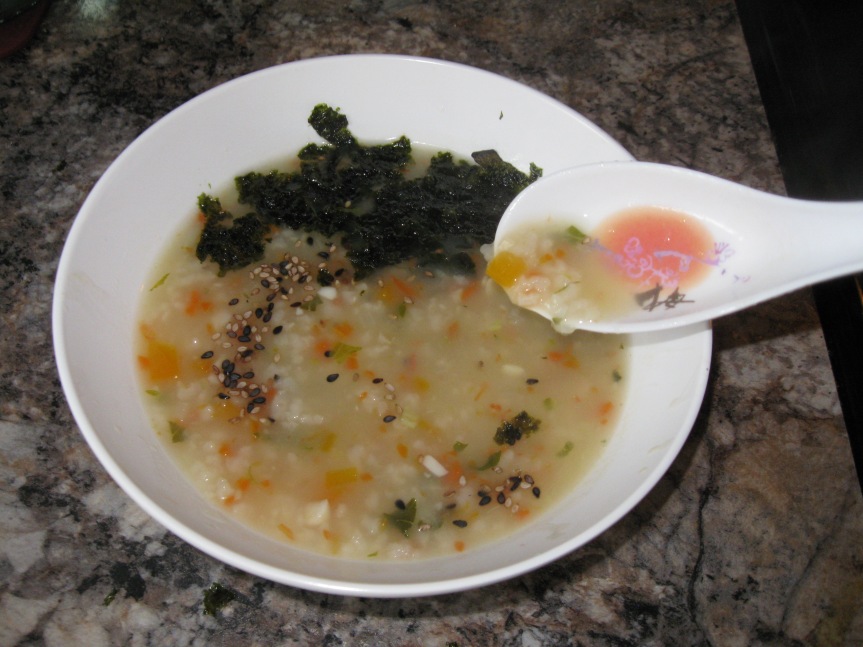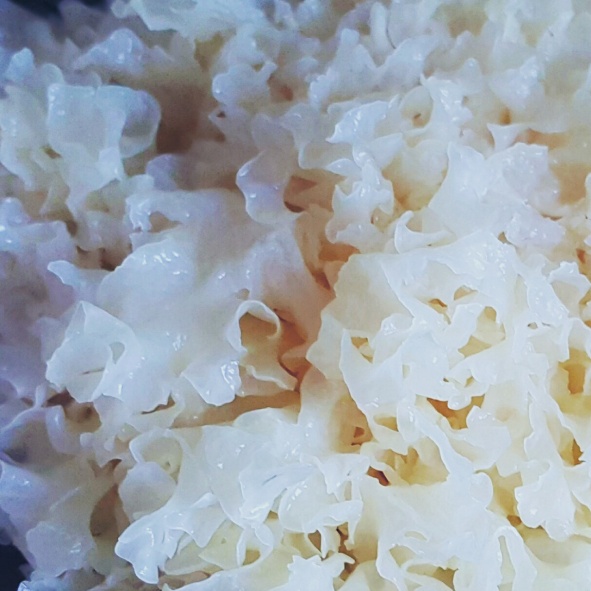
Welcome to Vegan Mamis Good Food Kitchen! Thank you for stopping by, today. I want to share with you a new item I found while shopping in my local Asian grocery store. It’s called Dried White Fungus. This is how I saw it in the store, on a shelf, nestled in its festive box:
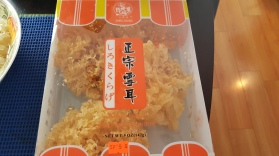
It looked like a gift, and I was intrigued. I could tell it was delicate because the package had been designed to guard the delicate little fungi from being crushed. I was drawn to it and decided it would be my next adventure into the culinary unknown.
Later, when I returned home and was able to do my research, I found snow fungus goes by many names such as: snow fungus, white fungus, silver ear, white jelly mushroom and white wood ear. It’s latin name is Tremella Fuciformis, and it is a mycoparasite which means it isn’t cultivated on wood like oyster mushrooms, shiitake mushrooms and other mushrooms, but it feeds on the mushrooms that are cultivated on wood. (You can learn more about the mushroom world by going to TomVolkFungi.net).
The snow fungus has been used in chinese medicine for centuries and is credited as a beauty enhancer and digestive aid and possibly improving lung immune function. Now I am not a doctor, and I know nothing of these claims, but if you would like to see more information on this type of thing, you can find it at Ping Ming Health- Accupuncture and Traditional Chinese Medicine http://www.pingminghealth.com/article/773/white-fungus-and-lung-immune-function
More benefit information is found at http://www.herbmuseum.ca/content/medicinal-benefits-snow-fungus
But I am learning about this snow fungus because it heightened my curiosity, and I’m always happy to try new foods and discover how I can use them. To begin, I had to reconstitute the dried fungus in water, which involved soaking the yellowish fungus in water for about 2 hours. It grew into a good sized ball and turned a beautiful white color with a soft and yet firm consistency. Before I could cook the snow fungus I turned it over and trimmed off the hard yellowed bits that looked to be part of a stem.
I read quite a few recipes from the internet and they were all a bit different, but the simplest recipe was to boil the fungus with jujubes (which are chinese red dates) and a handful of goji berries, for approximately one hour , or until you feel it is done. This procedure is meant to create a bowl of soup served warm or cold that enhances beauty; and really, who could turn that down? When cooked, the fungus had a crunchy texture that was at the same time, soft and gelatinous. Cooking it made the water thicker and slippery, as though I had mixed an arrowroot slurry into the soup pot. The fungus had no taste. The interest about it was in the texture. I had noticed some recipes called for adding sugar, other recipes added fruits to cook with the fungus, such as peaches or apples to add flavor.
This was not a culinary treasure in the taste department, at least not these recipes, but if one was interested in the purported benefits of the snow fungus, than its not a bad way to get it down. I tried the soup hot and cold, and the texture of the soup hot, was interesting but when I tried it cold, the next day, it was hard to eat until I became used to the extra silky body of the broth and the gelatinous and crunchy texture of the fungus.
I was determined to try another recipe, to see if I could make it more enjoyable. This time I made it as part of a stew. In a large pot, I put the snow fungus, torn into pieces, tofu, zucchini, onions, leafy greens, carrots, sweet potato noodles, a couple large spoonfuls kimchi and one green chile pepper. Then I filled the pot with vegetable stock to cover the veggies, and added a spoonful of gochujang (Korean hot pepper paste). Bought everything to boil, and turned to low, covered with a lid and let it simmer for 35 to 40 minutes.
The flavor of the stew was good, and the snow fungus added its magic as it thickened the stew, ever so slightly, giving the stew juices a silky feel. The snow fungus stubbornly retained it’s soft chewy- yet crunchy texture. Although it added no taste, it added an interesting texture to the stew, and was not in the least disagreeable. So this recipe was a yes, and I could see myself making it again.
I have other recipe ideas to try with this beautiful little gem, but I will leave that for another time. I am sure I have not even begun to tap the possibilities. Thank you for visiting with me today, and remember to keep an open mind and try new things, and always
always
always,
feed yourself and your loved ones good foods, real foods, and foods that are as unprocessed as possible.









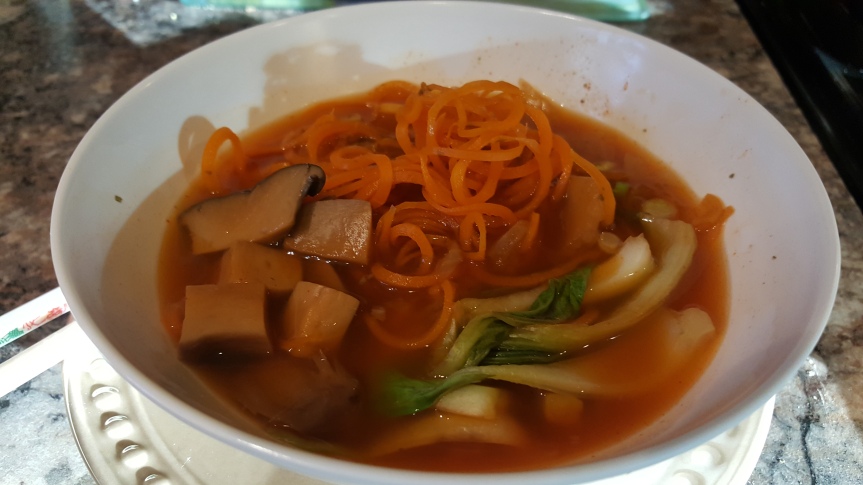
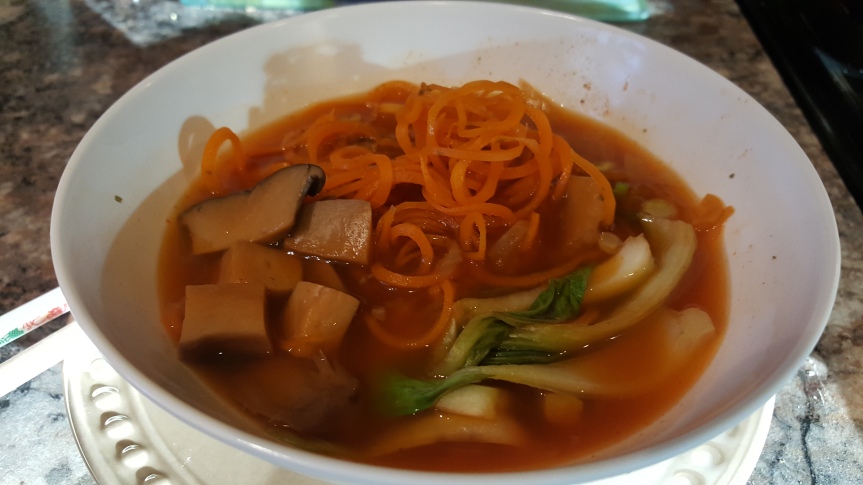























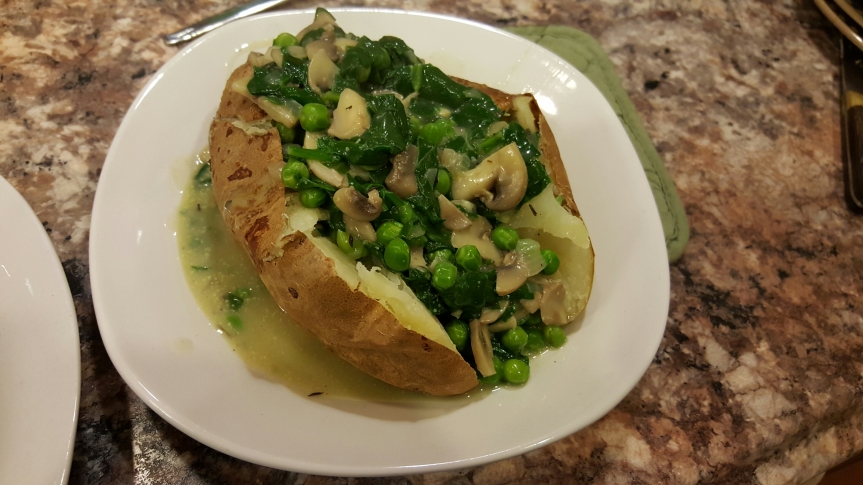
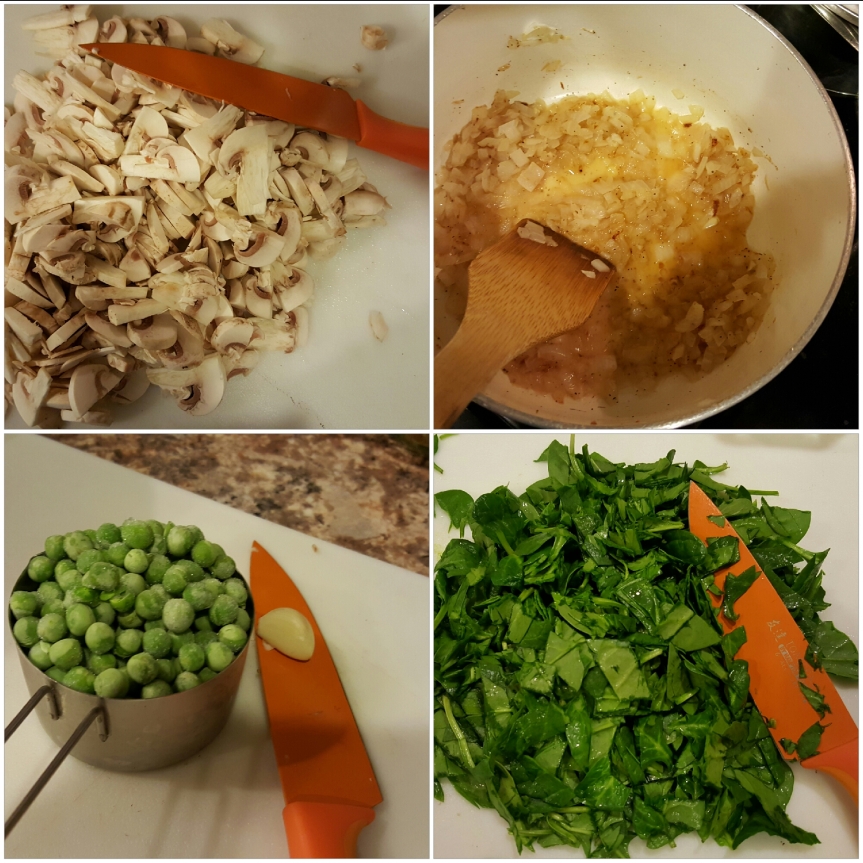 I prepped veggies next. Chopping 1/2 large white onion, 2 large cloves garlic,12 oz. White button mushrooms and 8 oz washed spinach. I measured out 1 cup frozen green peas.
I prepped veggies next. Chopping 1/2 large white onion, 2 large cloves garlic,12 oz. White button mushrooms and 8 oz washed spinach. I measured out 1 cup frozen green peas.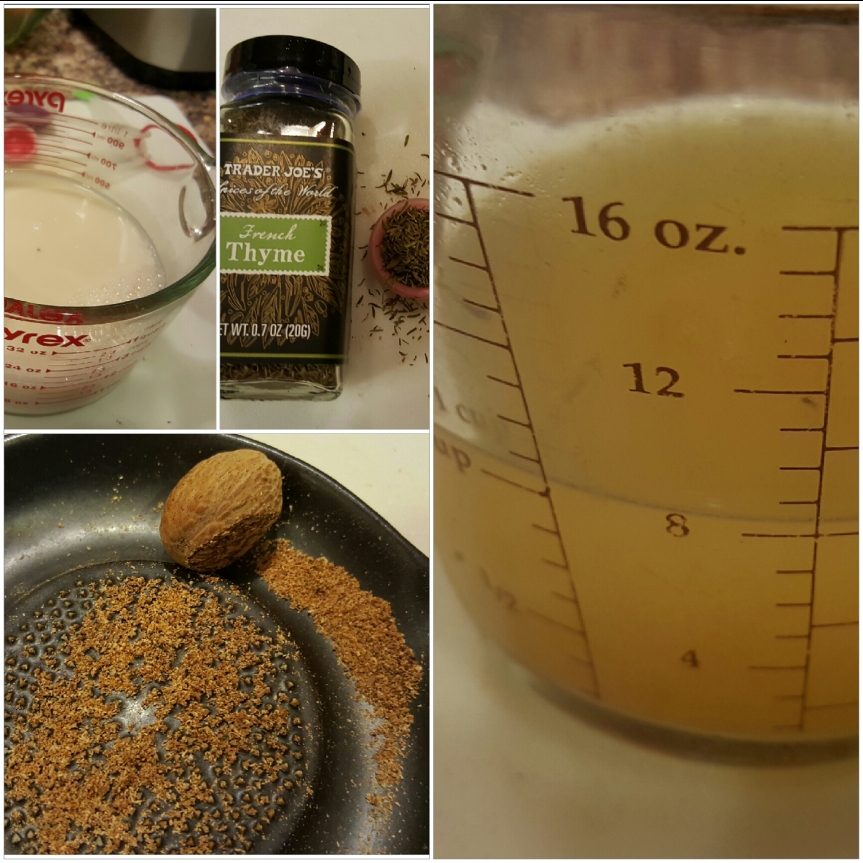 2 cups of unsweetened almond milk, 1 cup of low salt mushroom stock, 1 tsp thyme, a pinch of nutmeg and salt and pepper to taste. I let it all come to a boil, then turned the pot down to low and let it simmer covered, for 25 minutes. Then I added the spinach and peas to the pot, and bought the stew back up to a boil.
2 cups of unsweetened almond milk, 1 cup of low salt mushroom stock, 1 tsp thyme, a pinch of nutmeg and salt and pepper to taste. I let it all come to a boil, then turned the pot down to low and let it simmer covered, for 25 minutes. Then I added the spinach and peas to the pot, and bought the stew back up to a boil.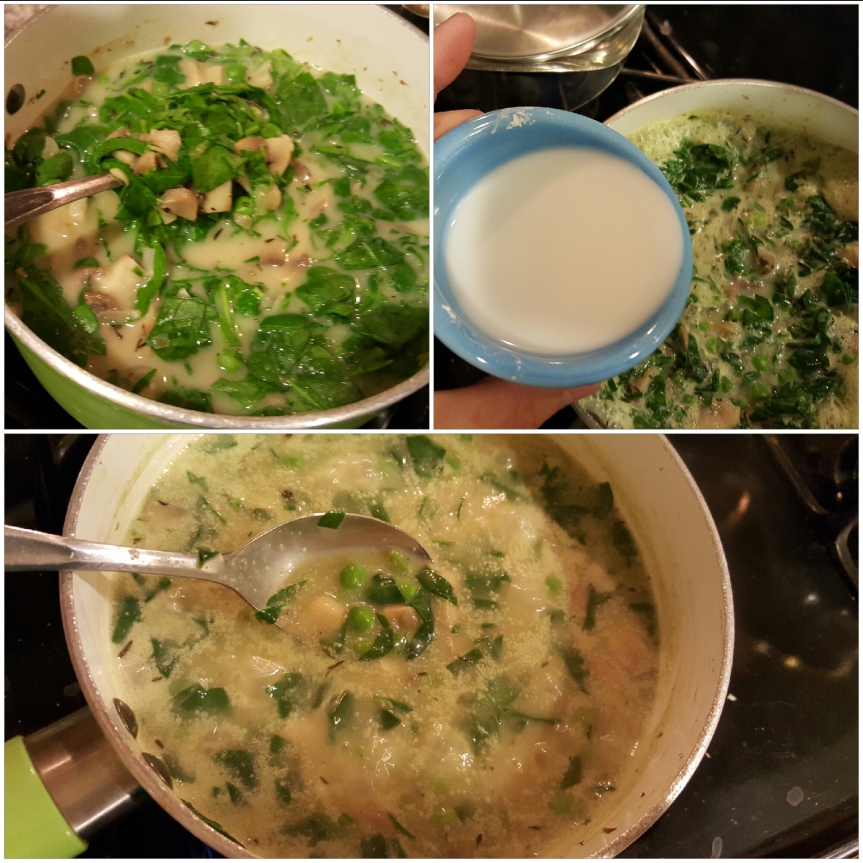 Then I tasted the stew for seasoning, adding more of anything I might think it would need…it tasted perfect…well…maybe it needed just a touch more salt.
Then I tasted the stew for seasoning, adding more of anything I might think it would need…it tasted perfect…well…maybe it needed just a touch more salt.